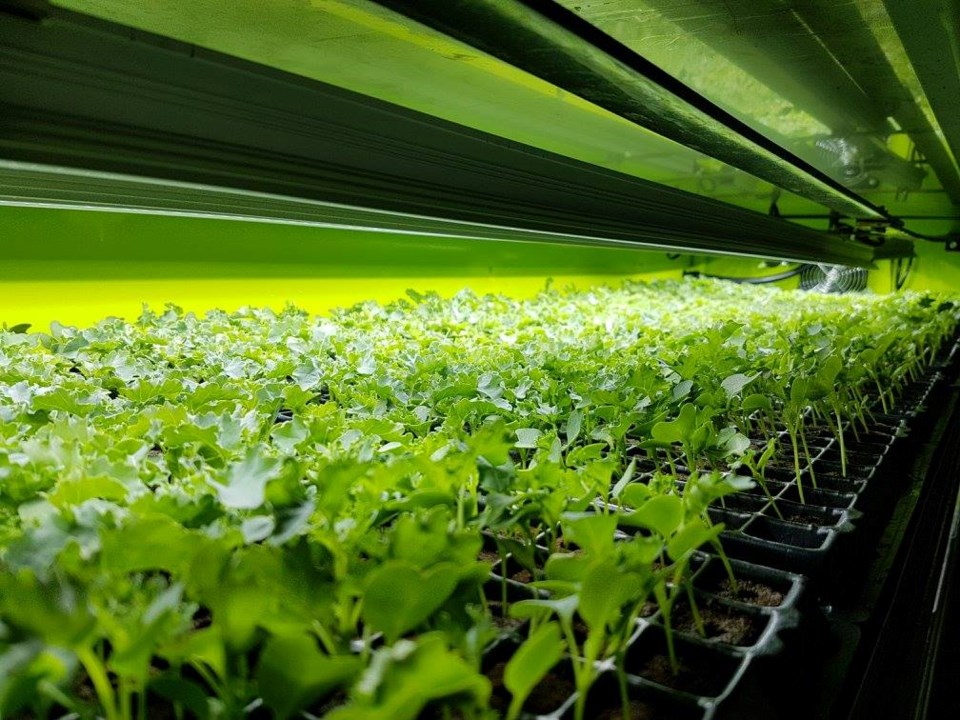A freshly established hydroponic farming operation is bringing the promise of new industry and employment to the small community of Opasatika.
This spring, Truly Northern Farms (formerly Smart Greens-Sudbury) will establish the first crops of lettuce and basil inside a 23,000-square-foot growing facility that was previously used for cultivating mushrooms.
Located about a 30-minute drive west of Kapuskasing, the Town of Opasatika has a population of about 200 people, but no major industry to sustain it.
The mushroom facility had sat vacant and unused for three years before Stéphane Lanteigne was approached by the owner about the building’s potential.
“We went up there, and the amount of infrastructure that’s in that building is unreal,” said Lanteigne, who now owns and operates the facility with his partner, Jeremy Gillanders. “So for us, we’re able to launch at a significantly lower price than if we were building up from new.”
With 90 per cent of the needed infrastructure already in place, the cost to build hovers around $3 per plant site, Lanteigne said.
That’s a huge decrease from what Lanteigne and his wife, Erin Rowe, see at their hydroponic container farms in Chelmsford, outside of Sudbury, where the per-plant-site cost is about $63.
Since the couple began growing kale there in 2017, a strong market has developed for their product, which they sell to local restaurants and grocery stores, and at the local farmers market.
But early on in the process, the couple quickly realized that this type of “boutique” growing was only suited to small, specific crops, and they were eager to explore farming on a larger scale.
“We're not moving away from kale – we still have a healthy market for kale – but we very much want to expand,” Lanteigne said.
The Chelmsford operation requires constant monitoring to ensure the plants are receiving optimal levels of water, nutrients, and light. But the Opasatika operation will take a different approach to growing that will be much less labour-intensive.
Seedlings will be placed into long metal racks, which float on a bed of water, and the entire structure moves around like a giant conveyor belt as the plants grow. Once they’re ready to harvest, the entire plant is plucked from the rack and packaged for shipping.
“You buy a live lettuce plant or a live basil plant,” Lanteigne explained. “That means it gets packaged with a little bit of water on the roots, so it literally stays living until you eat it. It’ll be even fresher than what we’re doing right now in Sudbury.”
They key is the water, he noted. Because the operation uses such a large volume of water, the plants don’t have a chance to deplete its nutrients. That means the water can constantly be recirculated, and Lanteigne said they’ll only have to check their water tanks once weekly instead of twice a day.
At 70 feet long, four feet wide, and 12 feet high, the racks can hold thousands of seedlings at a time. Initially, Lanteigne estimates they’ll be harvesting about 10,000 to 20,000 heads of lettuce every week, along with 10,000 basil plants. And that’s just using the one-third of the facility that’s ready to go.
An estimated six to eight harvesters will be needed to work at the facility, and Lanteigne said he already has a list of names of people eager to work there.
For a community of 200, where the closest industry is a half-hour away, eight full-time jobs will make a huge impact on the economy.
Though their goals are small in the interim, Lanteigne said Truly Northern eventually hopes to target the wholesale market.
“We have to make sure that we can grow well and consistently before we start targetting the Independent (Grocers) and Metros,” Lanteigne said.
Following excitement over renewed activity at the former mushroom facility, Lanteigne has fielded enthusiastic phone calls from city officials in nearby municipalities eager to discuss what possibilities their aging, unused buildings could present.
Lanteigne emphasized that it was the existing infrastructure in the Opasatika building that really made the business case for him. But that doesn’t mean other facilities can’t be used for indoor growing, he added; it might just mean using a different business model.
Encouraged about the future of hydroponic indoor growing, Lanteigne said he and his partners are happy to share their knowledge and support the agricultural community where they can. It’s an industry where they see plenty of opportunity ahead for the North.
“We’re feeling really optimistic, and it’s been a lot of work in the last two years, but it’s been really fulfilling,” he said. “I don’t think we see ourselves doing anything differently. We’re exactly where we’re meant to be.”




